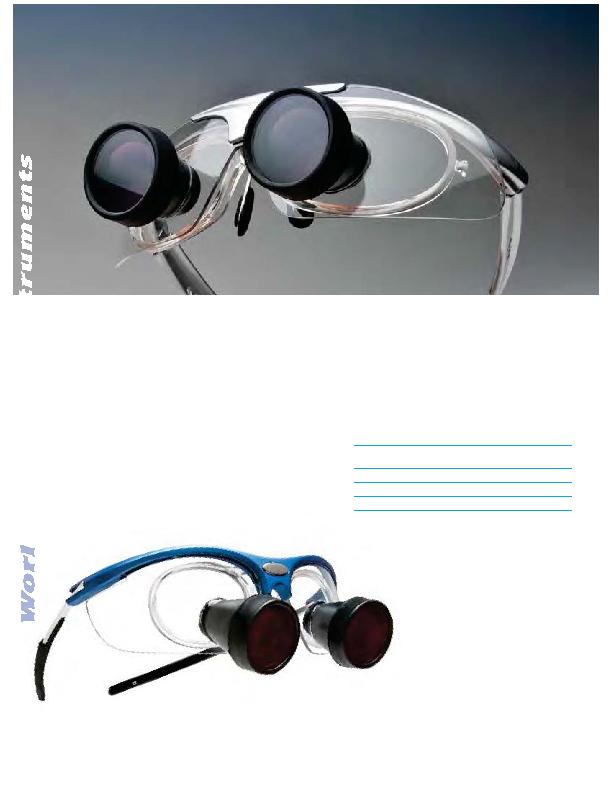
by enlarging the image when you are
working on tiny subjects or conducting
easier to use than a surgical microscope. Howev-
er, they are not created equal, and choosing
the pair that's right for you is important to your
satisfaction.
application involves several factors, including
resolution, working distance, field of view, depth
of field, magnification, weight and interpupillary
distance. These terms are defined below.
is suitable for your application. As a general
the depth of field and field of vision. Likewise,
the longer the working distance, the greater the
field of view. The larger your field of view, the
less you need to turn your head. This reduces
eye strain and fatigue. It is also important to
consider the weight and fit of your loupes. Light-
weight loupes are more comfortable for longer
periods of use, and they are less likely to slide
down your nose as you work. WPI loupes have
adjustable interpupillary distance for a correct fit
every time.
today. The first is a single lens loupe
for simple, low-magnification appli-
cations. A photographer or jeweler
might use this style. The second
style is the Galilean loupe designed
Galilean loupes use multiple lenses and offer
magnification between 2.0x and 3.0x. These
are easy to use, lightweight and affordable. For
greater magnification up to about 8.0x, prismat-
ic loupes (Keplerian) are available. Designed by
Johannes Kepler, prismatic loupes use a series of
lenses and prisms to magnify the subject. They
offer greater magnification, sharp resolution and
a greater depth of field.
details that can be distinguished. The type of
glass used in the lenses and coatings applied to
it can affect the resolution of your loupe. To test
a set of loupes, look through them at a piece
of graph paper. Notice color distortions or cur-
vature of the lines. A high resolution loupe will
have crisp, straight lines. The lines, seen through
lower quality lenses, will be slightly blurred and
curved.